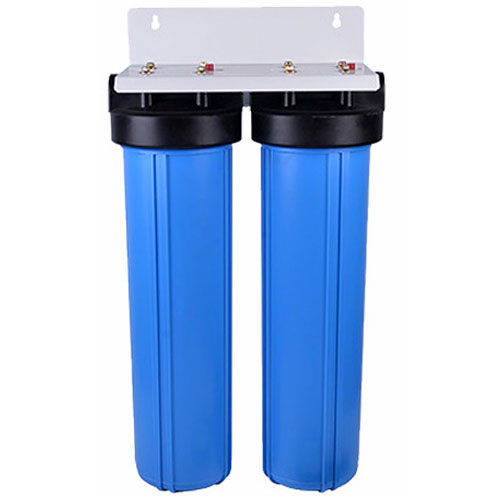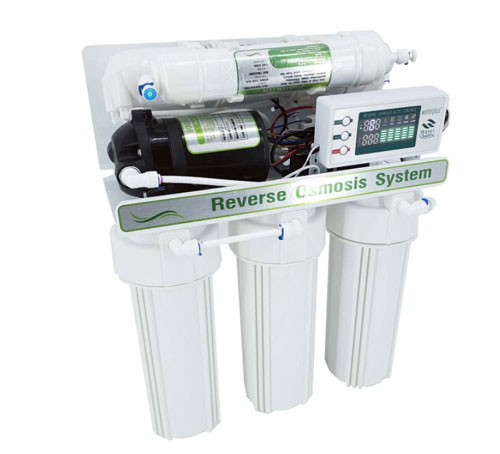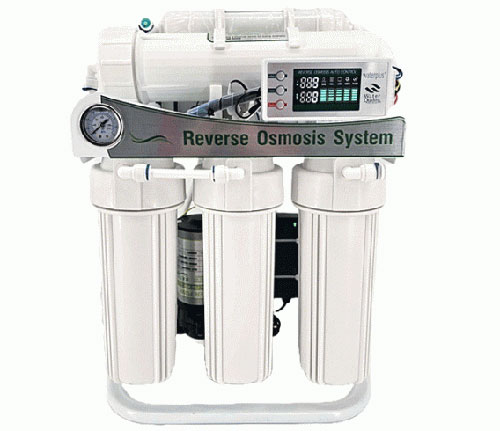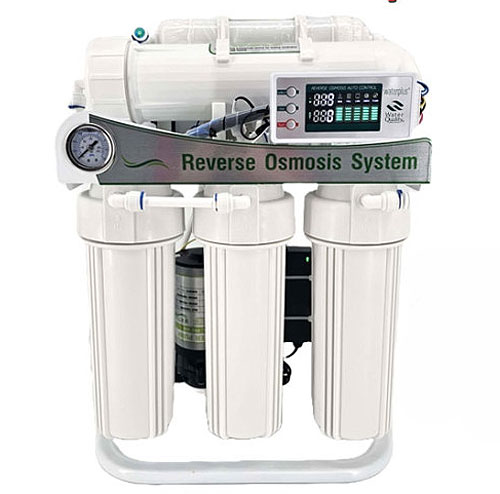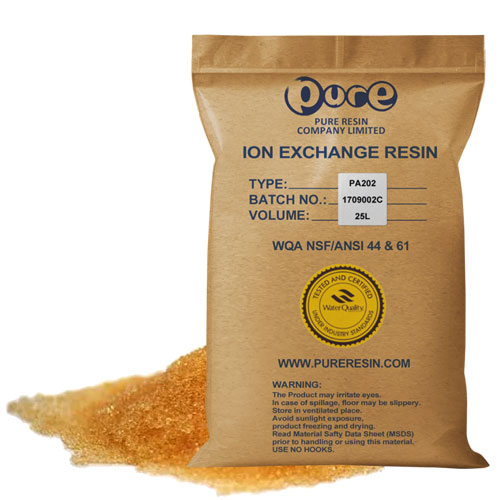
Picking a reverse osmosis filter system can be a headache at the best of times. Here we try to answer a few of our frequently asked questions to help you choose.
What is Reverse Osmosis?
Reverse Osmosis is water filtration to remove sediments and chemicals. The RO process is really quite simple and works by separating particles and contaminants from water by forcing it through a semi-permeable membrane which acts as a physical barrier. Unwanted molecules are retained by the membrane while the pure water passes through for use or further treatment.
The process takes unwanted particles retained by the membrane out through the waste pipe away to your drain. This filtration prevents the membrane clogging and prolongs performance life.

What is each stage of an RO Unit?

In-line Filters - are a smaller compact version of the full filters housing, De-ionsation post filters are available as a large post filter and a smaller inline filter.

US Gallons Per Day Converted to UK Litres Per Day
50g = 190 litres
75g = 285 litres
100g = 380 litres
150g = 570 litres
200g = 760 litres
300g = 1140 litres
450g = 1710 litres
What are the advantages of Reverse Osmosis?
Superior filtration for unwanted sediment and chemicals
Filters out 98-99%% of all unwanted molecules
AutoFlush prevents membrane from clogging
Easy to maintain, requires only routine maintenance
Storage tanks can be used for water-on-demand
What are some of the disadvantages of Reverse Osmosis?
Process is relatively slow, a storage tank can be used
Requires a connection to your drain for wastewater
Production is affected by low water pressure and high temperature
What is the need for pre-filters?
Pre Filters remove water contaminants larger than 5 microns before passing it to the RO membrane and prevent fouling and clogging.
What else should I look to invest in?
TDS Meter are a must for RO units to keep an eye on the performance of your system. The filters generally last between 6-12 months depending on your water quality and usage. TDS should be zero from your RO unit, or as close to it. Soon as this starts to rise, you should be looking to invest in Replacement Filters .
However if you have a Dual TDS Meter or a Triple TDS Meter you can monitor your feed water incase there is nothing wrong with your system and something wrong with the feed water quality (better than rushing out and replacing filters for no reason)
Also a Pressure Gauge, Our Full size RO Units come with a presure gauge fitted and for them to run at optimum performance at a certain pressure (see guides) this also needs to be maintained. If you can not get near the pressure required, then a Booster Pump would be advisable and easily solve the problem.
Our main RO Units already come fitted with a free pressure gauge.
Which speed should I get?
Systems from 50gpd up 450gpd, picking a speed will depend on your requirements. A nano tank for example would need very little water changes, so a 50gpd would be more than enough. However for a 10ft reef tank would require huge amounts of water changes/top ups on a regular basis.
Water production depends on your water pressure and temperature, if in doubt of what system to purchase we would advise to select the higher speed to ensure your system meets requirements.
For example; if you wish to produce 120 litres in a single day, rather than running your system over a couple of days whilst unattended or storing your pure water, choose a higher GPD to produce quicker.
How do I check my water pressure?
The simpliest check is to turn your cold water tap on full. If you get a few droplets of splashes when standing a couple of feet away your pressure is good enough.
However if not, call your local water supplier. They should be able to tell you what your water pressure is and whether it is likely to drop below 40 psi at any time.
PLEASE NOTE
Local water pressure can change, so please be mindful of local events such as roadworks that could temporarily change your pressure. All our units comes delivered with a free pressure gauge to help you check.
Why don't I get the GPD stated?
All RO unit filters are in US gallons not UK (3.8litre instead of 4.5litre) also as the filters get used, they "clog up" and slow the system down.
RO Units are reliant on your water pressure and also temperature. You could install a Booster Pump to produce more water if your pressure is low.
Where does the Flow Restrictor go on the unit?
TheFlow Restrictor goes on the waste pipe. It causes back pressure forcing water through the membrane material and to o maintain the correct concentrate/permeate ratio (normally 4:1) to ensure that contaminants are flushed away.
Our main units come with a flow restrictor already fitted.
How often should I change the pre-filters?
Pre-filters should be replaced every 6 months or 2500gallons (or when visibly dirty) please click here Replacement Filters . If any of your pre filters are exhausted, using the unit will put additional pressure on the membrane. Filters are much cheaper to replace than a damaged membrane.
Is your softening resin suitable for refilling a domestic water softener which uses salt for regeneration?
Yes it is specifically designed for this.
What's the ratio between good and waste water on your ro units?
Membrane manufacturers requirements of 4:1 to maintain warranty terms. You can reduce the waste ratio by adding our Upgrade Kits which recycle waste and can reduce waste ratio by 50 % per additional membrane.
The 5 Stage RO Units are delivered with an extra membrane as they have been designed to reduce waste.
Can I feed RO Unit from an external water butt?
Yes, but you will need to use an RO Unit Booster Pump to get the right pressure for the membranes. You will also need a filter on your system to prevent larger particles entering the RO System.
Can I store and use my waste water
Yes of course you can use the waste water for gardening and watering plants.
Can I adapt my system to be portable
Of course you can, simply add 3 In line Ball Valves to your order; one for each tube/pipe, the inlet, pure and waste. These valves can be turned into the "off" position (or stop flow). They will keep your system wet and stop the membrane and filters drying out which is damaging, allowing you to put your system away or in "shut down" mode.
It is good practive to turn the valves on in the following order; feed, waste, pure and then off in the following order; pure, waste, feed. Remember to run a few litres off before using the pure water to sanitize and remove stagnant water.
Benefits of an RO Unit Upgrade Kit?
Upgrade Kits are great for either customers wanting to increase their pure water production and also those on a water meter who want to produce less waste.
A 3 membrane system is designed to reduce you system to a 1:1 ratio and increase pure water prodcution.
Consideration for the flow restrictor is explained here;
RO Unit with 3 x 150gpd membranes.
The flow restrictor must match the membrane, ie. 150gpd membrane = 150gpd flow restrictor. If you increase the size of the flow restrictors your 2nd/3rd membranes will not have sufficient back pressure to work.
The flow restrictor is there for two main reasons.
1) provide back pressure forcing water through the membrane material
2) to maintain the correct concentrate/permeate ratio (normally 4:1) to ensure that contaminants are flushed away.
Making sure that you flush the membranes regularly will have the same effect as a higher rated restrictor, albeit intermittently. If you really are concerned about the effect on membrane life you could put a Solenoid in parallel with the flow restrictor on a timer to open every hour for 15 minutes. All our main units are fitting with a flush valve, if you have concerns over the life expectancy of your membranes use flush valves.
To produce pure water when adding additional membranes you need at least 65 psi feed water pressure. If your pressure is low simply add a Booster Pump .
Do Reverse Osmosis Units need electricity?
No, these units run purely on water pressure. You only need electricity if you add an electric pressure Booster Pump
Can I gather RO Water and leave unattened?
Yes, of course you can. Simply install a Auto Shut Off Float Kit onto the vessel you are gathering water into. Please note that if you have a Booster Pump on your system due to low pressure you will also require a High Pressure Switch to swith off your system once the vessel is full.
What does an RO System Reject

If this has not answered your question, please contact us and we'll be happy to help. Open 9.00am - 5.00pm Monday - Friday


